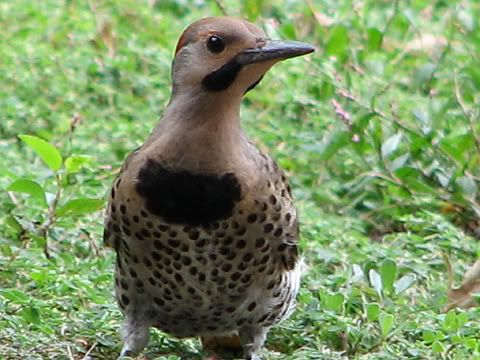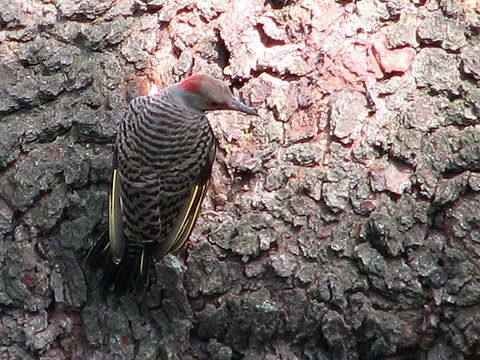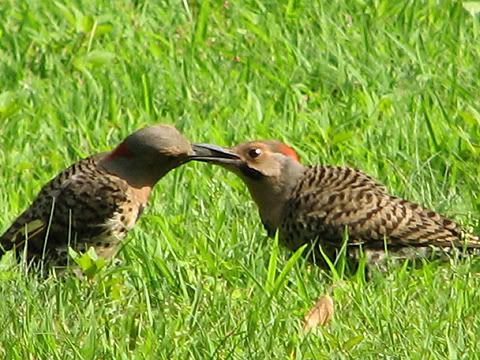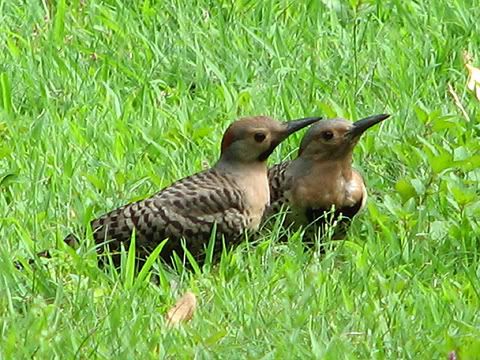365 Urban Species. #227: Northern Flicker

Photos by cottonmanifesto. Location: the Riverway, by Brookline Ave., Boston.
Urban species #227: Northern flicker Colaptes auratus
Surprisingly, this large and striking bird is more often heard than seen. It's call note: "Clear!" and deafening song: "Flickaflickaflickaflicka!" ring through wooded parks in quieter parts of the city. On the ground it's easy to mistake for a large robin, as it digs for insects. Unlike other woodpeckers, the flicker spends a lot of time feeding on the ground. It too can be seen clinging to trees, chiseling holes in dead wood, building a nest or in search of prey, but its preferred quarry, ants, are more likely to be on the ground than high above.
Flickers and carpenter ants, along with underappreciated wood decaying fungi, transform trees into nesting space. The ants excavate wood weakened by the fungi, and the flickers drill holes to get at the ants and their young. The flickers raise their own brood in the hollow they create. The holes they make are used by many other birds, including native songbirds like chickadees, nuthatches, and titmice, as well as predatory urban birds such as screech owls and American kestrels, and of course may also be used by invasive species like European starlings and house sparrows. Perhaps most surprising, flicker holes provide nesting sites for some small ducks, notably buffleheads and mergansers, but especially wood ducks.
Northern flickers are common and abundant throughout most of North America. In the western states the flicker is known as the "red-shafted," and in the east it is the "yellow shafted" due to the color of the shaft of their primary wing feathers. Most often when someone brings me an unidentified feather, it's a yellow-shafted flicker feather. The color on these feathers looks almost artificial, as if it were a dyed feather from a costume. In the north most flickers migrate, but some along coasts and in well-landscaped settled areas, stay through winter, feeding on the fruit of ornamental shrubs and trees, and in agricultural fields.


Baby gets fed.
